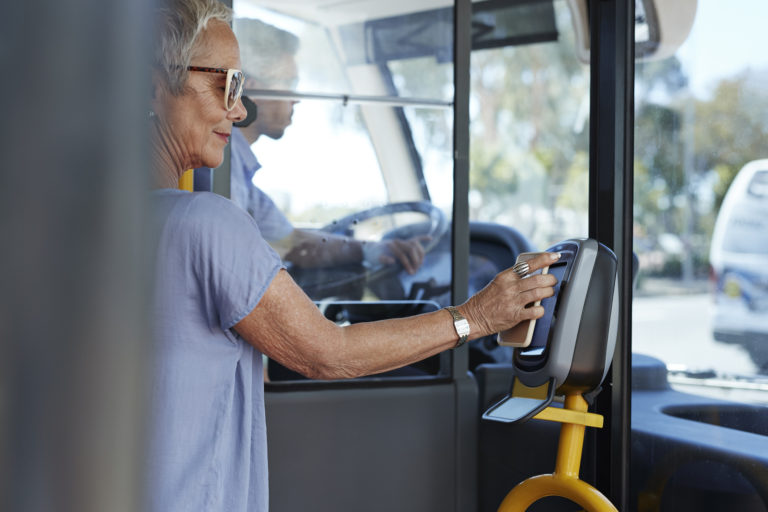
Many companies are making big promises about cashless payments: You’ll soon be able to buy whatever you need with just the tap of a button, scan of your phone, or swipe of a card. But in our collective hurry to spend more money with greater speed and ease, we’re leaving millions of Americans behind and millions more at risk – and benefiting only a few at the top.
Looking in from the outside
Who gets left behind when you can’t make purchases with cash? People who are already vulnerable in one way or another – making a shift to cashless just one more addition to the growing divide between the wealthy and everyone else. And it’s not a small number of people – millions of Americans are excluded when you require them to pay with a card or app.
One in four Americans are unbanked or underbanked according to the FDIC. This includes people who don’t have a bank account of any kind or don’t have access to some banking services. These consumers primarily use alternative financial services – check cashing, money orders or rent-to-own – rather than traditional banking.
Many people fall into this group because of issues with their credit history, through a mistake or misfortune. For example, around two-thirds of bankruptcies are caused by medical issues. Some consumers’ credit history is impacted by their choice to not participate in the traditional banking system.
The result is that these households don’t have the reliable access to credit or debit cards needed to participate in a cashless system and this means that many of these consumers are shut out by this technology.
Immigrant communities can be especially vulnerable to the discrimination that results from cashless payment options. In Sweden, the country that has moved the furthest away from cash, immigrants are feeling the impact. Swedish bank account requirements for residents are making it hard for immigrants – regardless of documentation – to participate in this growing part of their economy. An increased reliance on electronic, regulated, transactions means that government regulators could easily exclude millions of immigrants from large swaths of the economy through a minor regulatory change.
Seniors are another group of consumers excluded by cashless. Smartphone taps may seem like the quickest way to buy something for many people, but with some stores going beyond cashless and also requiring an app, the barriers are even higher for older consumers. Seniors are the most likely to be excluded by these businesses. Only a quarter of those over the age of 65 even have a smartphone and the elderly write checks as their preferred payment method more than any other age group.
Risky behavior
One of the primary concerns that prevent consumers from adopting mobile and cashless payment systems is a lack of trust in the safety of the systems, with many shoppers worried about the control their data. Recent data breaches at major companies have shown that consumers have good reason to be concerned. Some of the most devastating hacks have involved the technology that would be the backbone of any cashless transaction system.
A total of 147.9 million accounts at Equifax, the credit scoring bureau, were hacked in 2017. It took the company almost three months to discover the hack and they waited another three months before they told consumers that their personal information had been stolen.
Several retailers have also been victims of massive data breaches targeting their payment systems, including stores that now want you to use their cashless payment systems. These include companies like Target (110 million credit and debit card numbers), T.J. Maxx (94 million accounts), and Uber (57 million users).
Who benefits?
Shoppers and workers are not the ones benefiting from cashless. The real winners are the big banks and credit card companies who process your payments. That’s because while a cash transaction is between you and the merchant, an electronic payment means that big financial transaction companies get a cut of your spending. That’s why the CEO of Bank of America says “we have more to gain than anybody” in the move to cashless.
The shift to cashless also means an overall increase in prices we pay every day as the costs of processing these payments is passed along by businesses to consumers. Small businesses, in particular, struggle with these small fees because larger businesses have more resources to negotiate lower costs and can bear the burden of the overhead more easily.
A future without cash
Our country’s economy has always been driven by innovation and new technology. But with so many workers and families being left behind by the cashless retail push, we need to decide if this is the future we want. If you want to protect good-paying jobs and an economy where everyone can participate, you may want to think twice about where you shop and how you pay on your next trip to the store.
